|
Each morning we practice outside on the terrace, facing east. The sun rises in front of us as we practice. It starts small and red just over the horizon and grows into a hot yellow ball overhead. Sun Salute in the truest sense. The terrace where we practice in the mornings. It is usually between 80-90 degrees Fahrenheit, 60-90% humidity at that time of day. As a gift, we gave Muktamala a Dharma Yoga Wheel. She was eager to try it, even in the nice sari that she wore for the occasion. She has a light, playful and generous spirit. It is dark at 5:30pm, though it is warm. After receiving our certificates, we went to the front gate to take some pictures. Some of us did postures in front of the gate. Notice that crowd that gathered on the left. Muktamala presenting me with the certificate for the training. I look like a giant.
0 Comments
Today is our final exam. It is in two parts: practical and prescriptions.
At 11am we gather in the women’s practice room; it is the bigger of the two rooms and where we have been doing group practices for the past few weeks. One by one, Muktamala calls on us to demonstrate a given exercise, asana or pranayama. We are expected to know their names, how to execute them and how to assist a student with them. We don’t know when she will call on us or what she will ask us to do. Some of the requests are easy and familiar: Singhasana, Pelvic Tilt. Others are more complicated or less practiced: Static Neck Exercises with Ball, 4 kinds; Standing Jastiasana with Contraction of Buttocks and Dorsi Flexion of Ankle Joints. At 4pm we meet up in the dining room around the big circular table where we have had many lectures. Muktamala gives us 2 cases for which we will write prescriptions. She gives us the sex, age, weight and height of each patient, along with their ailments, injuries and limitations. Our job, over the course of an hour or so, is to write yoga prescriptions for them. We have done this many times over the past few weeks as homework, but the test now is if we can do it without the help of our notes. Muktamala is forgiving. She allows us to use our notes if we’d like. I am eager to try the prescriptions completely from memory. It takes me about 30 minutes to finish the two cases, then we are done. I led class again this morning. I followed the general shape and progression of the Intermediate and Advanced classes, interspersing therapeutic exercises that we have learned in the past few weeks and postures from Buddha Bose’s book. It felt like the beginning of a unique, authentic and therapeutic style of yoga, combining the asanas that are familiar to Bikram and Tony’s students with the less familiar but equally valuable Bose asanas and the uniquely Ghosh exercises. Marrying the many forms of Ghosh yoga into a cohesive whole. This excites me.
Relatedly, we picked up copies of Dr. Prem Sundar Das’ book Yoga Panacea. Das was one of the last students of Bishnu Ghosh, and his pictures are all over the studio here. His book details many of the postures that we have learned, including therapeutic benefits and contraindications. It is clearly from the same teacher as Muktamala’s. It also reminds me strongly of Buddha Bose’s book and also of Gouri Shankar Mukerji’s. (The discovery of Mukerji’s is a recent development, one that I’m sure I will write more about in the future.) Over the past week we have learned several different breathing exercises (Pranayama). Each serves a different purpose. One to balance the mind, one to energize it, one to calm it. One to cool the body, two to cleanse it. One to simply slow the breath. These are all seated breathing exercises to affect the nervous system and the body’s physiology. When combined with the various standing breathing exercises we have learned to warm and develop the muscles of breathing, we have upwards of 20 breathing techniques.
Some of the more challenging, powerful and advanced practices of Hatha Yoga are the mudras - body positions done with very specific breath control. Muktamala has taught us a small handful of these and it is wonderful to practice them at the end of our asana sessions. She taught us a version of Viparit Karani, the simple inversion that resembles Shoulderstand, that I hadn’t seen before. Agni Sar, the fanning of the digestive fire, also takes on a different form here than what I have learned in the past. Same for Yoga Mudra, the cross-legged forward fold with held breath. I embrace these variations whole-heartedly, happy to become familiar with a different side of the exercises. It is like seeing an old friend in a new light. The perspective brings added meaning and a deeper understanding. Today Muktamala leads us through a very specific meditation. It follows our physical practice. (what Muktamala refers to as “Practicals”). It is not long. It begins with a few lengthened breaths to quiet the mind and body, followed by a few minutes of simple mind-observation. Notice your thoughts, acknowledge them and let them go. Next comes a period of “so-hum” meditation, where the tone of the mind shifts slightly on the inhale and exhale. After a few minutes the focus is released and the meditation ends. Nearly every class ends with Bhramari, the ears and eyes closed and a rich Om vibrates the skull. Then we rest quietly to finish class. Sunday. No class today.
Most of the group is gone today. One has gone to spread her father’s ashes in Varnasi. One has gone to South Carolina to play music with Rolf Gates at Yoga Reaches Out. Four have taken the overnight train to Ranchi for the day. Only Jeff, Mardy and I remain here in Calcutta. In the morning, the three of us do the Advanced Class together in Bishnu Ghosh’s old yoga room. As always, it is informative, fun, educational and inspiring to practice with yogis more advanced and experienced than me. We take our time and revel in this opportunity to practice here at the Ghosh school, where our lineage began. We spend the rest of the day at a big shopping center in central Calcutta doing decidedly first-world things. We see a movie, drink lattes, soda and milkshakes, get massages and eat at an Italian restaurant. I buy a couple of books (I love getting books in India) including Elizabeth Gilbert’s new book about creativity. Today brings our trip (and perhaps our existence) into sharp relief. On one hand we are living in old Calcutta, the poorest part of the city, peeing into a hole in the ground and avoiding the drinking water. On the other hand we are watching Matt Damon on the big screen and eating roasted vegetables and tiramisu. The contradiction is disturbing to me as is the blatant consumption that gives me comfort. Saturday. Muktamala has given us the day off. Today marks two weeks that we have been here. We are about halfway through the training.
This morning for the 6am class, I led the group through a nearly comprehensive practice of therapeutic exercises that Muktamala has taught us. There are lots of them, about 110. We need to know their names, how to execute them, their benefits and contraindications, and how to instruct and assist their performance. This morning’s class was one part study/review and one part practice. We can’t quite agree on how to execute the Sun Salute, Surja Namaskara. There are 8 counts that reverse in the second half, so you count up to 8, then back down from 8 to 1. Each count is done with half a breath. Muktamala always repeats the “8” before counting down, and Mardy says that Bikram and Emmy do the same thing. But that messes up the breath and the positions for me. We couldn’t come to an agreement. We will have to ask Muktamala on Monday. No training today. I need to work on some music, so I set out with Jerome for a bookstore cafe where we can sit with our computers and work. It shouldn’t be a surprise, but the bookstore is closed, so we proceed on a day-long wandering excursion that takes us to a British restaurant, an American cafe, a large tree in “central park” where there are many kite flyers and ferocious-looking ants, a south Indian restaurant, the packed New Market and Calcutta’s only remaining Jewish bakery, and finally a return home through the press and push of downtown. I go to sleep almost immediately upon returning. Wee Hours
Depending on the residual jet lag and the previous day’s exertion or napping, many of the trainees are up in the middle of the night. Activities range from asana practice to review of class notes or compilation of materials from the lectures. I never know who or what I will find at 2 or 4 in the morning. 6am Each day starts at 6am. All the students go up to the terrace and practice together for about 90 minutes. This happens without Muktamala. We independently decided to do this daily practice because we were all up early anyway (jet lag), and because it is nice to start the day with some movement. Each day, practice is led by a different one of us. Some days it is Bikram’s Beginning Class. We have also done a Vinyasa class, a mash-up of therapeutic exercises and asanas, and a practice derived from the instructions in Buddha Bose’s book. The local yoga students arrive at the school at 6am and classes begin. Echoing down the halls, we will hear “1-2-3-4-5-6-7-8-9-10” over and over again until 10am as the yoga teachers count for the students. 8am Breakfast is served about 8am. The food is all vegetarian. Lots of potatoes, bitter melon, toast, onions, papaya, and our favorite - tea. 9am-1pm Morning class starts anywhere from 9am to 11am and runs for 2-3 hours. We have been starting with a lecture about benefits, contraindications, diseases, nadis or chakras until the local students clear out at 10. Then at 10:30 or so we head downstairs into the big room to practice. “Practical,” Muktamala calls it. We familiarize ourselves with the names and execution of each exercise and posture. 1pm Lunch, rest, study or prescription homework. 2:30pm Afternoon class is usually a lecture about any number of things as mentioned above. Non-class time is spent studying, resting, or some form of excursion into Calcutta. 5pm Evening class is another short lecture before dinner. 8pm Dinner. The schedule is slightly different every day, but this is the general structure. We do a lot of resting, a fair amount of time working on prescription homework and studying the exercises, and a lot of wandering through the city. And of course I can’t forget the daily pilgrimage to the local shop for sparkling water. There is no tv and not much internet. Most of the students have some sort of international data plan on their phones, but we must be conservative in its use as it has to last the whole trip. So we are generally in bed early. Today we use the time in-between classes to wander through Calcutta. We start at a coffee shop in the book district. The coffee is not very good, but it is nice to sit, drink and converse. Our wanderings take us around old Calcutta, and we end up at the Vivekananda museum, the huge property where he grew up that was eventually separated and then restored to its former and present form.
I like Vivekananda, but mostly the visit reminds me of my desire to learn more about Ramakrishna, the Hindu priest who knew God through many Hindu deities as well as Islam and Christianity. “I have found that it is the same God toward whom all are directing their steps”, he said. We have begun doing prescriptions. Muktamala gives us a patient’s age, sex, weight and height along with ailments and issues. Our job is to prescribe breathing, exercises and postures that address the ailments while avoiding any contraindications or injuries. We started with a relatively simple one, but now she is giving more elaborate and complex cases.
It is great practice in getting to know the exercises and postures from a different perspective. I am used to understanding everything from my own experience and sensation, but I am relatively healthy and uninjured. It is just as valuable to know the reasons NOT to do a posture as it is to know the reasons to do it. Developing a system of yoga for each individual case requires a lot of cross-checking of postures, comparing benefits to contraindications, the patient’s needs with their injuries or ailments. I find myself understanding the yoga from another angle. This is the heart of Ghosh Yoga as passed down by Bishnu Charan Ghosh. Individualized therapy for every person, one on one. It is Sunday, a day off here at the Ghosh school. We have no classes and the school is closed, so the halls are quiet and we have full use of the rooms for the whole day. What a treat!
We delay our morning class until 8am, and I lead the group through the Intermediate series. We practice in the room that Muktamala refers to as “my grandfather’s room.” “He used to sit here and teach the students,” she says, pointing to one corner of the room. In the afternoon we go to the east side of town to a shopping center to pick up some necessities: more bath tissue, kleenex, some food and water. A slow and relaxing day. |
This journal honors my ongoing experience with the practice, study and teaching of yoga.
My FavoritesPopular Posts1) Sridaiva Yoga: Good Intention But Imbalanced
2) Understanding Chair Posture 2) Why I Don't Use Sanskrit or Say Namaste 3) The Meaningless Drudgery of Physical Yoga 5) Beyond Bikram: Why This Is a Great Time For Ghosh Yoga Categories
All
Archives
November 2017
|

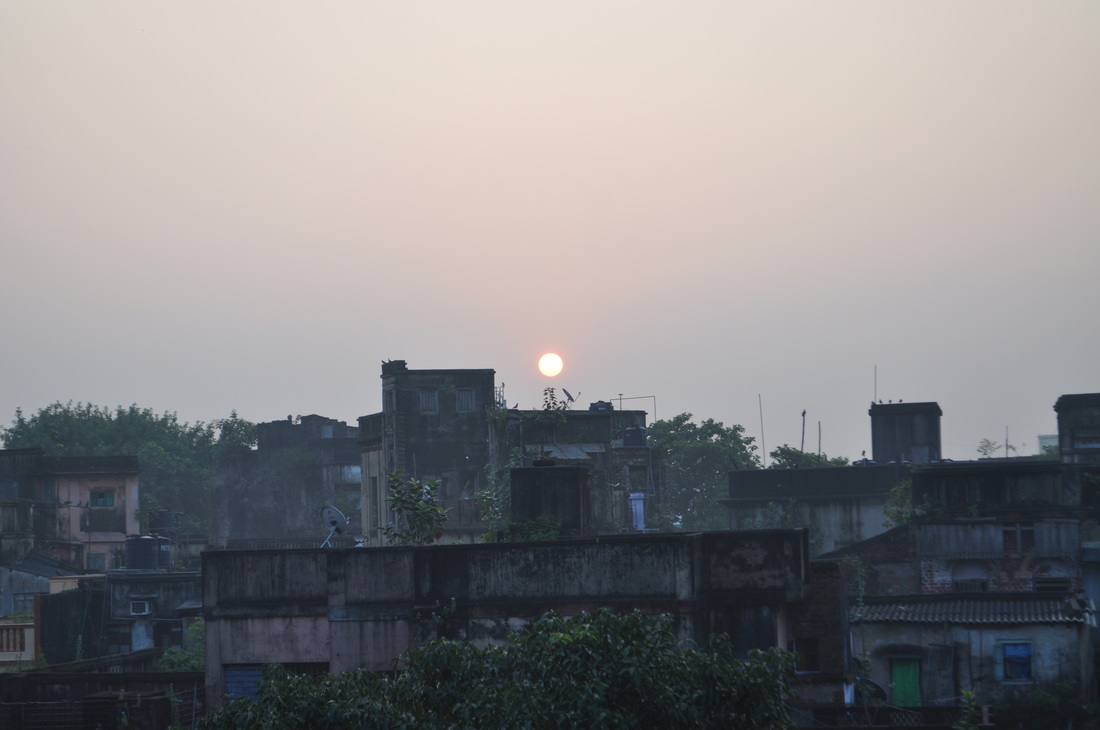
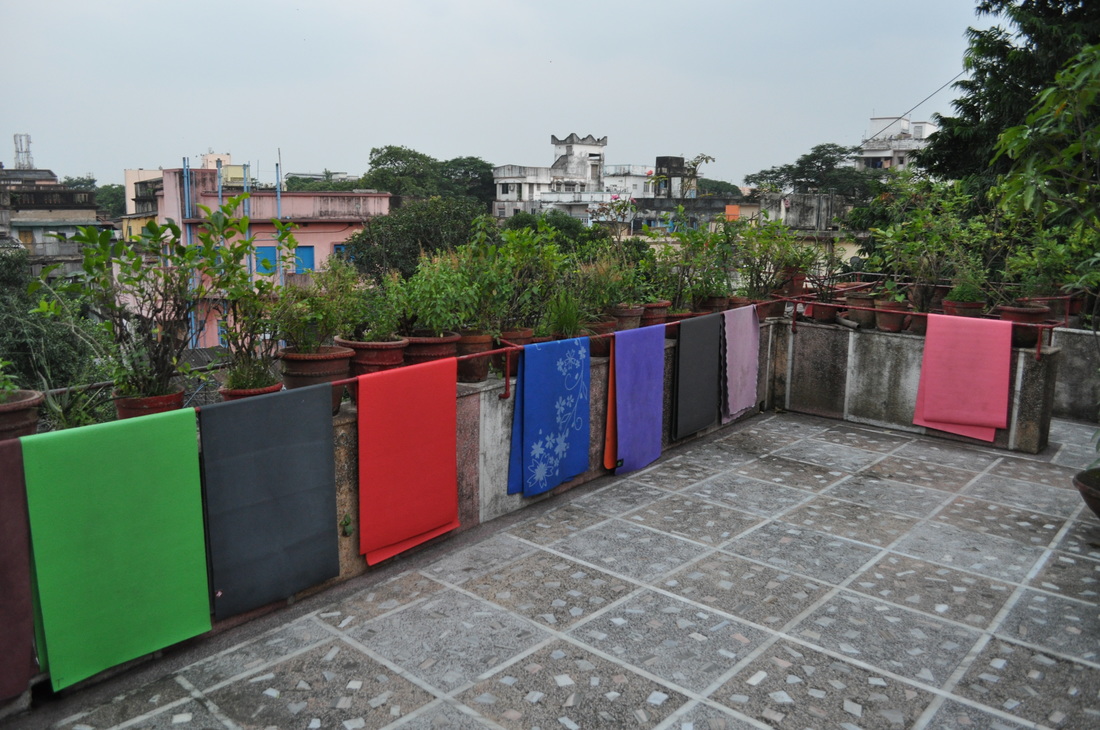
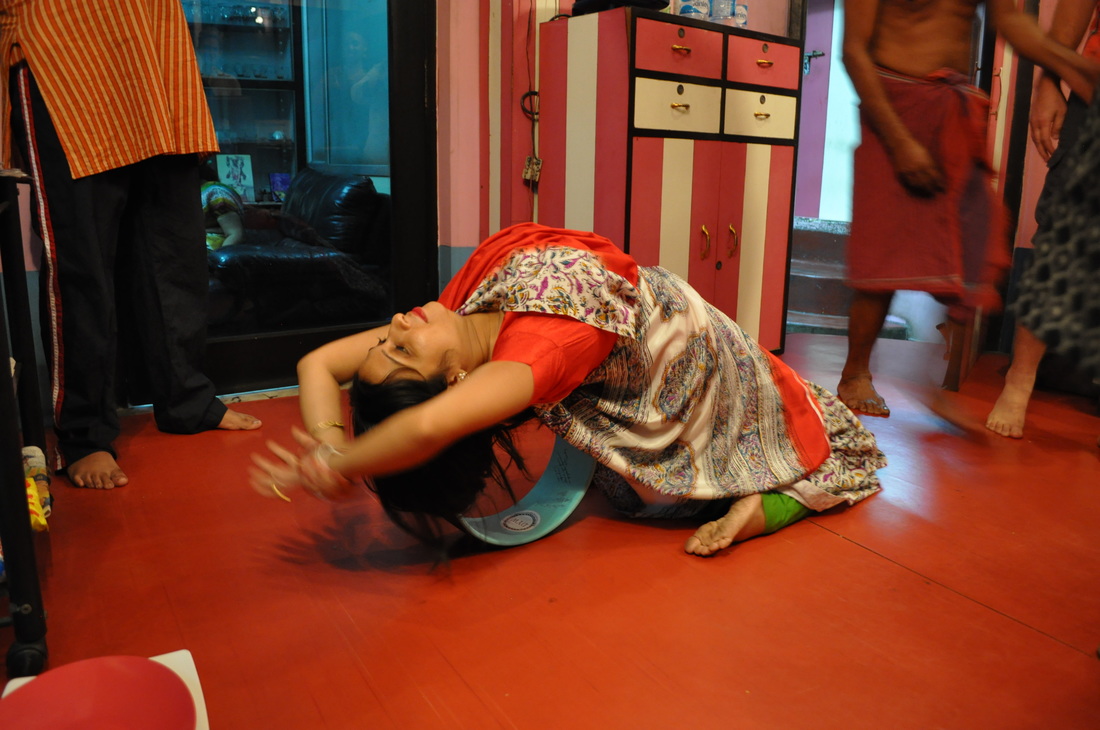
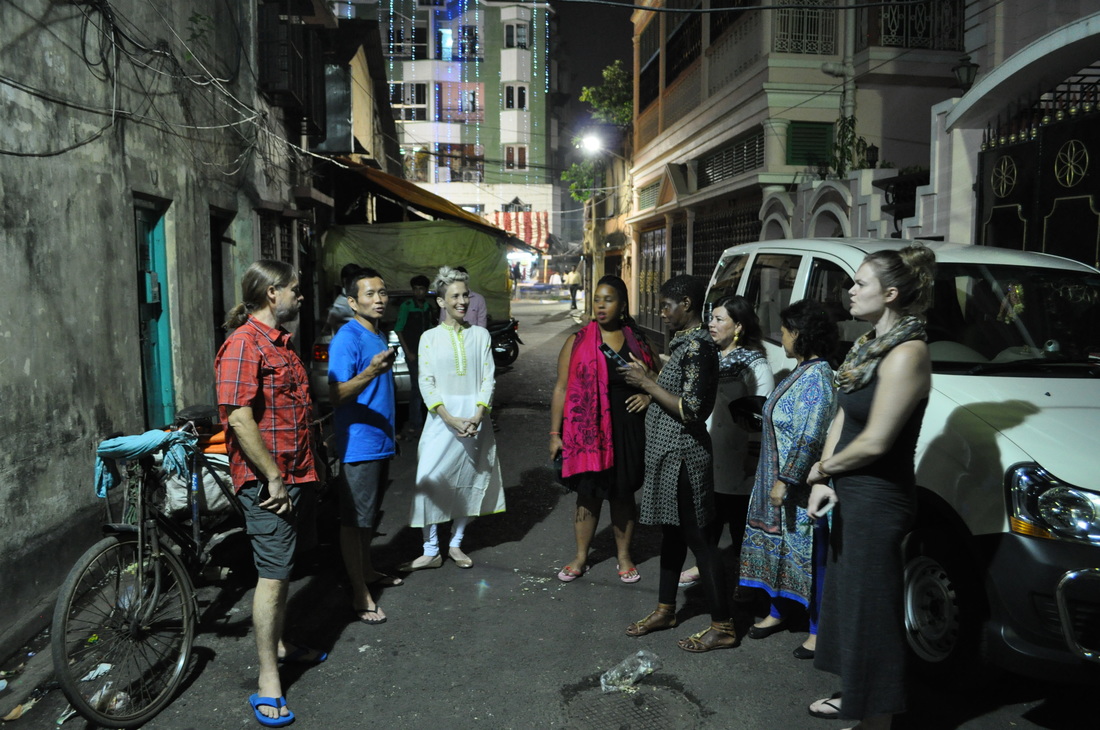
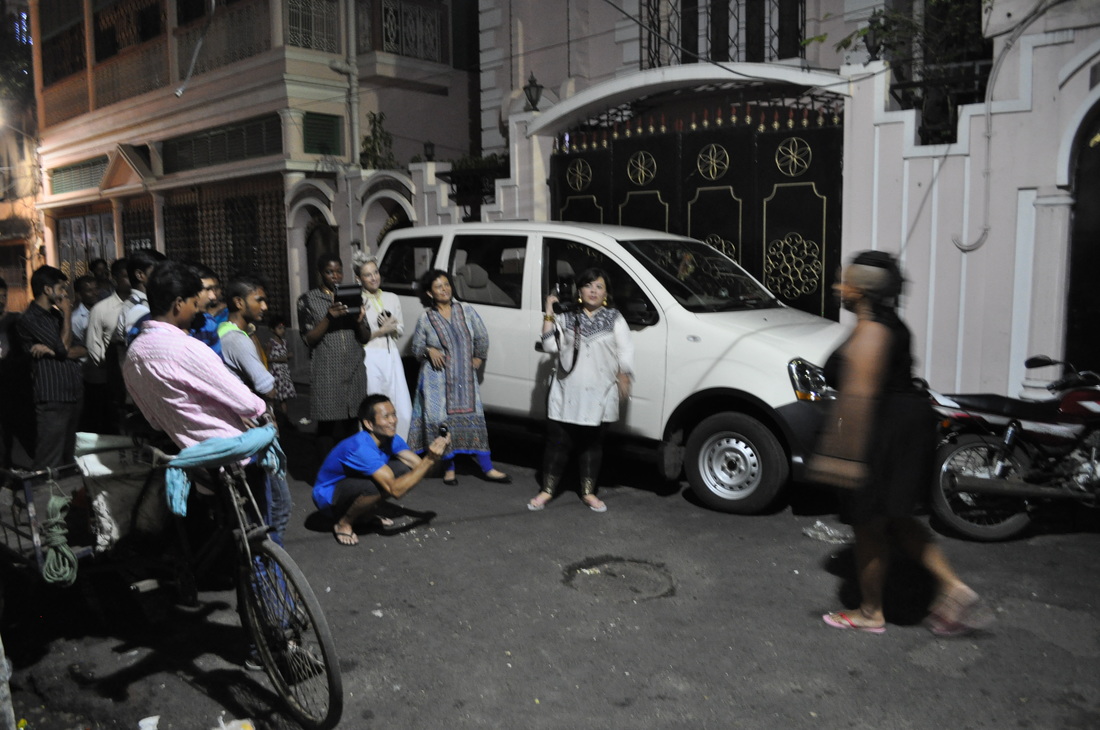
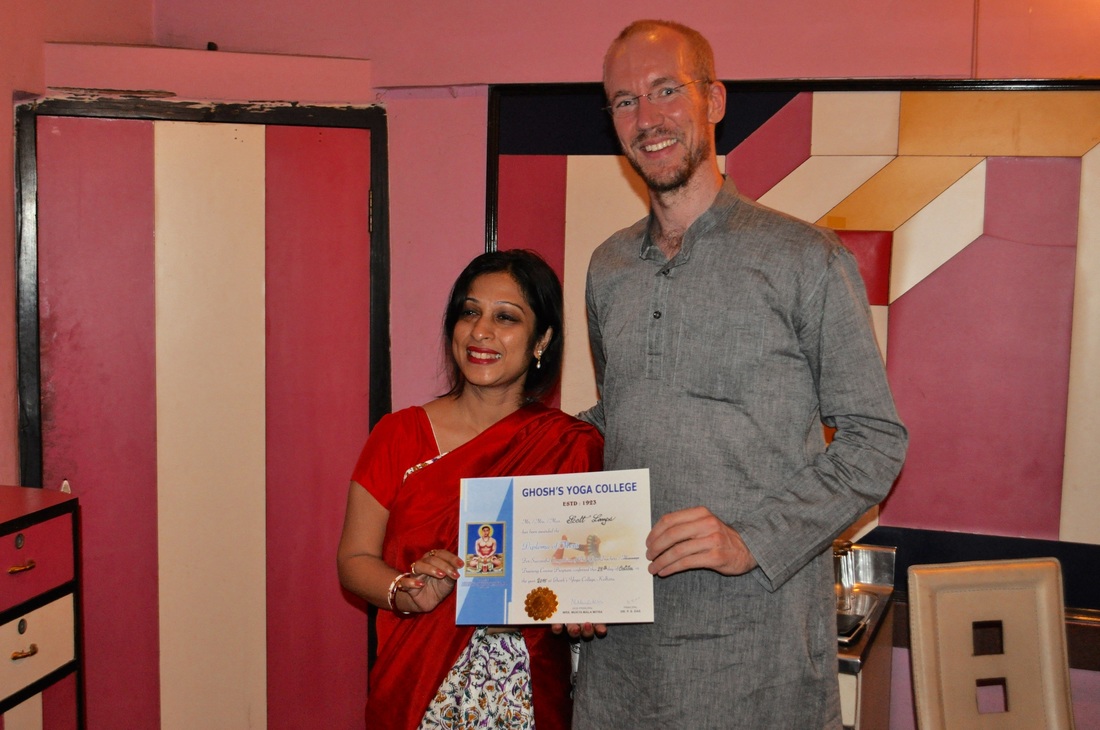
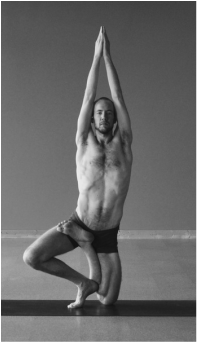
 RSS Feed
RSS Feed